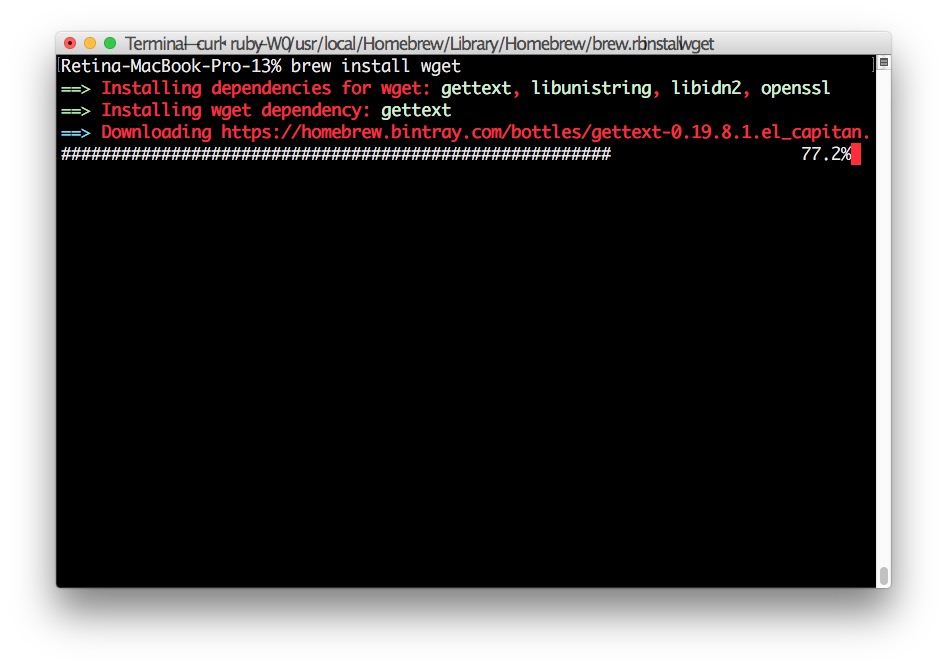Brew For Mac Install

There is also a Homebrew formula available for Inkscape 0.92.1.
Using simple commands you can add, update or remove the dependencies. 1 Install methods 1.1 Brew. 1.2 Downloading directly from the composer website. 1.3 Using docker. 2 The most important commands 2.1 composer install. 2.2 composer update. 2.3 composer require. 2.4 composer remove.
This formula has been posted to the Inkscape user mailing list by its author, Tim Sheridan. As per his instructions, when you have Homebrew installed, you can install Inkscape with
Note: If you've previously installed Inkscape using Homebrew, you should run the following commands to remove previous installations before using the installation command above: Zend studio for mac.
The Homebrew formula is provided by Tim Sheridan. If you encounter issues with installing Inkscape this way, please create a bug report in its repository at github.
Inkscape needs your help. Every user who can contribute to Inkscape's development is investing in the future of the project. Donations allow us to do so much within the project to continue providing you with new releases of Inkscape with better features and bug fixes.
Instructions for a supported install of Homebrew are on the homepage.
This script installs Homebrew to /usr/local so thatyou don’t need sudo when youbrew install. It is a careful script; it can be run even if you have stuffinstalled to /usr/local already. It tells you exactly what it will do beforeit does it too. You have to confirm everything it will do before it starts.
macOS Requirements
- A 64-bit Intel CPU 1
- macOS High Sierra (10.13) (or higher) 2
- Command Line Tools (CLT) for Xcode:
xcode-select --install,developer.apple.com/downloads orXcode3 - A Bourne-compatible shell for installation (e.g.
bashorzsh) 4
Alternative Installs
Linux or Windows 10 Subsystem for Linux
Check out the Homebrew on Linux installation documentation.
Untar anywhere
Just extract (or git clone) Homebrew wherever you want. Just avoid:
- Directories with names that contain spaces. Homebrew itself can handle spaces, but many build scripts cannot.
/tmpsubdirectories because Homebrew gets upset./swand/opt/localbecause build scripts get confused when Homebrew is there instead of Fink or MacPorts, respectively.
However do yourself a favour and install to /usr/local. Some things maynot build when installed elsewhere. One of the reasons Homebrew justworks relative to the competition is because we recommend installingto /usr/local. Pick another prefix at your peril!
Multiple installations
Create a Homebrew installation wherever you extract the tarball. Whichever brew command is called is where the packages will be installed. You can use this as you see fit, e.g. a system set of libs in /usr/local and tweaked formulae for development in ~/homebrew.
Uninstallation
Uninstallation is documented in the FAQ.
1 For 32-bit or PPC support seeTigerbrew.
2 10.13 or higher is recommended. 10.9–10.12 aresupported on a best-effort basis. For 10.4-10.6 seeTigerbrew.
3 Most formulae require a compiler. A handfulrequire a full Xcode installation. You can install Xcode, the CLT, or both;Homebrew supports all three configurations. Downloading Xcode may require anApple Developer account on older versions of Mac OS X. Sign up for freehere.
4 The one-liner installation method found onbrew.sh requires a Bourne-compatible shell (e.g. bash orzsh). Notably, fish, tcsh and csh will not work.